In the tantalising world of pastry, mastering hard skills is the key to creating delectable creations that captivate the senses. From the precision of baking techniques to the artistry of dessert decoration, a pastry chef’s toolkit is enriched by diverse capabilities.
Of course, to be a well-rounded chef requires a blend of hard and soft skills or personal qualities, allowing a pastry chef to excel in their professional career.
In this article, we delve into the essential hard skills that every aspiring pastry chef must cultivate, exploring what they entail and how to develop these talents to craft culinary wonders that leave a lasting impression on every palate.
Developing these hard skills allows chefs to broaden their repertoire of skills in building their careers and what they can offer customers.
Table of Contents: List of Hard Skills for Pastry Chefs.
- Mise-en-place for a smooth workflow.
- Baking and pastry skills as basic to a pastry career.
- Dessert decoration and plating for visual appeal.
- Cake design and assembly skills for making sound edible art.
- Bread-making to know the basics and craft arrays of bread.
- Chocolate work to create artisanal confections.
- Sugar artistry for decorations and displays.
- Ice cream and frozen desserts to complement baked goods.
- Savoury baking for non-sweet options.
- Flavour pairing and palate development to balance taste.
- Menu and recipe creation for skill show and client taste.
- Ingredient knowledge to create tasty, innovative goods.
- Specialised dietary knowledge to cater to special needs.
- Seasonal and local ingredient use for sustainability.
- Patisserie display and buffet presentation for aesthetics.
- International pastry know-how to enrich skills.
- Culinary Maths proficiency for preciseness.
- Understanding the science of baking for accurate results.
- Knife skills for precision, efficiency and safety.
- Oven and equipment expertise for quality and efficiency.
- Hygiene and food safety know-how for customer safety.
- Menu costing and profitability for decision making.
- Quality control and consistency to maintain standards.
Pastry Chef Hard Skills and Developing Them.
Master Mise-en-place for a Smooth Workflow.
Mise-en-place, which means “everything in its place,” is a crucial hard skill for baking and pastry chefs. It refers to the meticulous organisation and preparation of ingredients, equipment, and workstations before baking or pastry-making.
Mise-en-place reduces downtime during preparation, allowing the pastry chef to work efficiently and complete tasks more quickly.
How to develop mise-en-place skills:
Practice organising and planning: Create detailed checklists and recipes with a clear breakdown of required ingredients and steps. This habit will help you become more methodical and focused.
Practice time management: Set time limits for organising ingredients and tools, challenging yourself to improve efficiency in setting up workstations.
Optimise workstation: Invest time to arrange ingredients and tools logically and ergonomically to minimise unnecessary movements and increase productivity during preparation. This enhances efficiency and minimises errors.
Baking and Pastry Techniques as Basics to a Pastry Career.
A pastry chef must be proficient in various baking and pastry techniques. These skills are the foundation of a successful pastry chef’s repertoire, enabling pastry chefs to create a wide range of delectable treats, from classic pastries to intricate desserts.
Baking skills: Baking skills encompass the knowledge and techniques required to produce various baked goods, such as bread, cakes, cookies, and tarts, using precise measurements and temperature control.
It includes knowledge of mixing methods, dough preparation, proper yeast handling, understanding the effects of temperature and humidity on baking, and the ability to create consistently high-quality baked goods.
Pastry skills: Pastry skills involve the artistry and finesse needed to craft delicate and visually appealing desserts, including intricate decorations, sugar work, and chocolate tempering.
Pastry chefs need expertise in various techniques, such as creating flaky pie crusts, laminated dough for croissants, choux pastry for éclairs, and sponge cake for layered desserts. They should be skilled in correctly measuring and scaling ingredients and mastering the art of creating light, airy, and tender pastries.
Baking and pastry skills allow pastry chefs to diversify their offerings, catering to different tastes and occasions, from simple comfort pastries to elegant and complex desserts.
How to develop baking and pastry skills:
Practice and Experimentation: Regularly practice different techniques in baking and working with pastry, practising various baking and pastry recipes, and experimenting with various ingredients, tools and methods to build confidence and proficiency in each technique.
This hands-on approach helps pastry chefs understand the nuances of baking and develop a more profound intuition for the craft.
Embrace Creativity: Allow your creativity to flourish by experimenting with unique flavour combinations, innovative designs, and unconventional ingredients. Embracing creativity enhances your ability to develop distinctive and memorable desserts.
Get Specialised Training: Attend training programs or workshops on pastry techniques like sugar work, chocolate tempering, or laminated dough. Consider formal education for comprehensive knowledge and hands-on experience with various baking techniques.
Seek Mentorship: Work under experienced pastry chefs or bakers who can provide guidance, share valuable insights, and offer constructive feedback. Learning from seasoned professionals accelerates skill development and fosters continuous improvement.
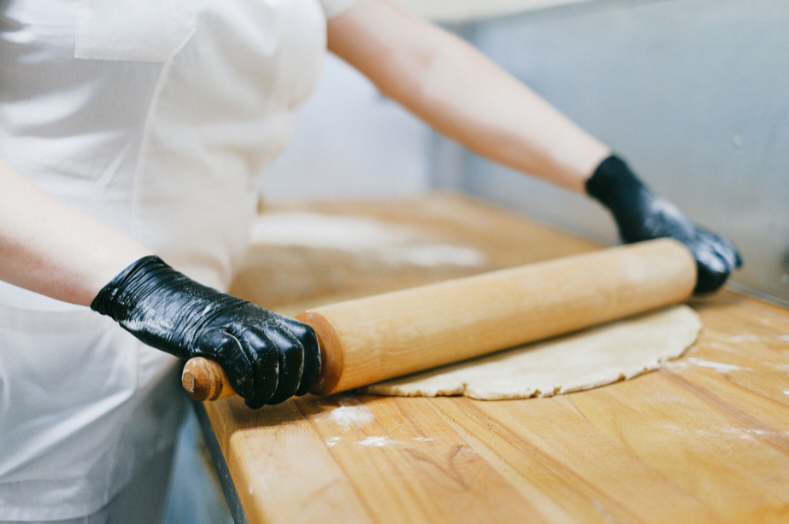
Dessert Decoration and Plating for Visual Appeal.
Pastry chefs should possess skills in dessert decoration, plating and presentation, ensuring their creations taste delicious and look visually stunning. This goes beyond creating tasty treats to elevating the dining experience and leaving a lasting impression on customers.
Dessert decoration involves using various techniques and creative elements to enhance the visual appeal of sweet treats, making them visually enticing and appealing to customers.
Plating refers to arranging desserts on a plate in an aesthetically pleasing and organised manner, elevating the dish to a visually striking centrepiece.
The presentation encompasses the overall visual aspect of the dessert, including decoration, plating, and the use of complementary serving ware, making the dessert a complete and delightful experience.
Dessert decoration, plating, and presentation are pivotal in delighting customers and enhancing their dining experience, increasing customer satisfaction and loyalty.
How to Develop Dessert Decoration, Plating, and Presentation Skills:
Study and Research: Study various dessert presentation styles, trends, and techniques from culinary books, online resources, and social media platforms to understand different approaches and possibilities.
Practice and Experiment: Regularly practice dessert decoration and plating techniques, experimenting with different arrangements, colours, and garnishes. Frequent experimentation allows for the development of a unique and personal style. Seek feedback from peers, mentors, and customers to improve and refine your presentation skills continuously.
Attention to Detail: Pay meticulous attention to every presentation element, from arrangement, garnishing and colour coordination. Cultivate an eye for detail to ensure that desserts are visually stunning, well thought out and professionally presented, reflecting the dedication of a skilled pastry chef.
Training and Workshops: Attend specialised courses, workshops, and seminars on dessert decorating and plating techniques. Learn from experienced professionals and practice various styles to broaden your skills.
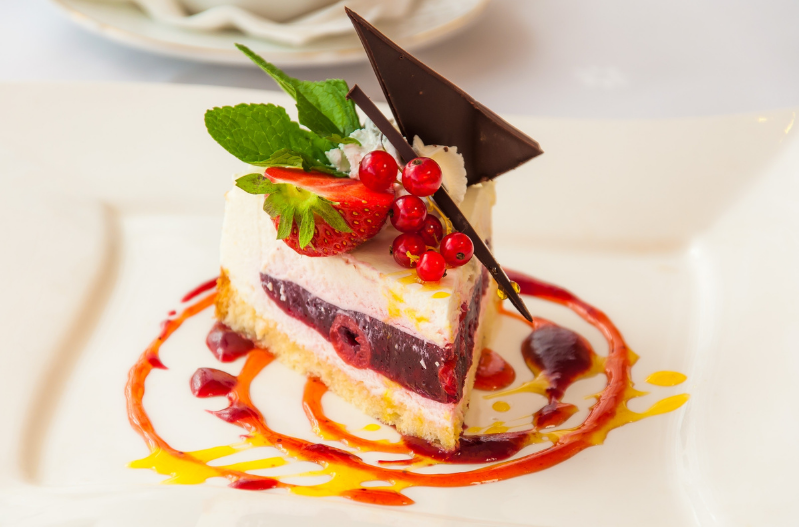
Cake Design and Assembly for Making Sound Edible Art.
Baking and pastry chefs need the ability to design and assemble cakes, including layering, filling, and frosting. They should be skilled in cake levelling, stacking, and creating smooth finishes with buttercream or fondant. Additionally, knowledge of cake carving, sculpting, and making themed or custom-designed cakes is highly valued.
Cake design and assembly skills are vital for creating visually stunning and aesthetically pleasing cakes, making them attractive centrepieces for special occasions and events.
How to develop cake design and assembly skills:
Creative Exploration: Experiment with cake design styles, themes, and decorations. Explore working with various cake decorating mediums such as fondant, buttercream, chocolate, and sugar paste. Engage in continuous creative exploration to develop a diverse repertoire of cake designs.
Practice and Precision: Regularly practice cake assembly techniques, focusing on precision in levelling, layering, and frosting. Attention to detail ensures a polished and professional finish.
Seek Inspiration and Education: Attend cake decorating workshops, read cake decorating books, watch tutorials, and seek inspiration from social media platforms and cake design experts. Continuous learning and exposure to new techniques will help hone your cake design and assembly skills.
Bread Making to Know the Basics and Craft Arrays of Bread.
A baking and pastry chef’s bread-making proficiency is a crucial skill. They must know different bread types, such as artisanal loaves, baguettes, rolls, and speciality bread. They must also develop bread-making skills, such as understanding the fermentation process, shaping dough, scoring, and achieving proper crust and crumb textures.
Breadmaking expertise allows pastry chefs to offer a broader range of baked goods, including artisanal bread, rolls, and speciality loaves, complementing their pastry offerings and satisfying diverse customer preferences.
How to develop breadmaking skills as a pastry chef:
Practice and have Patience: Study bread recipes and techniques, regularly bake different types of bread, and experiment with various doughs, fermentation techniques, and baking methods. Developing breadmaking skills requires practice and patience to perfect the craft.
Understand Dough Development: Gain an in-depth understanding of dough development, fermentation, and gluten formation. Learning the science behind bread-making allows you to troubleshoot issues and make informed decisions during baking.
Study and Learn from Experts: Read books, watch instructional videos, and attend workshops by experienced breadmakers. Learning from experts provides valuable insights and tips to enhance breadmaking skills.
Formal Training: Enroll in baking and pastry programs that include dedicated modules on breadmaking. Structured education provides essential theoretical knowledge and hands-on practice.
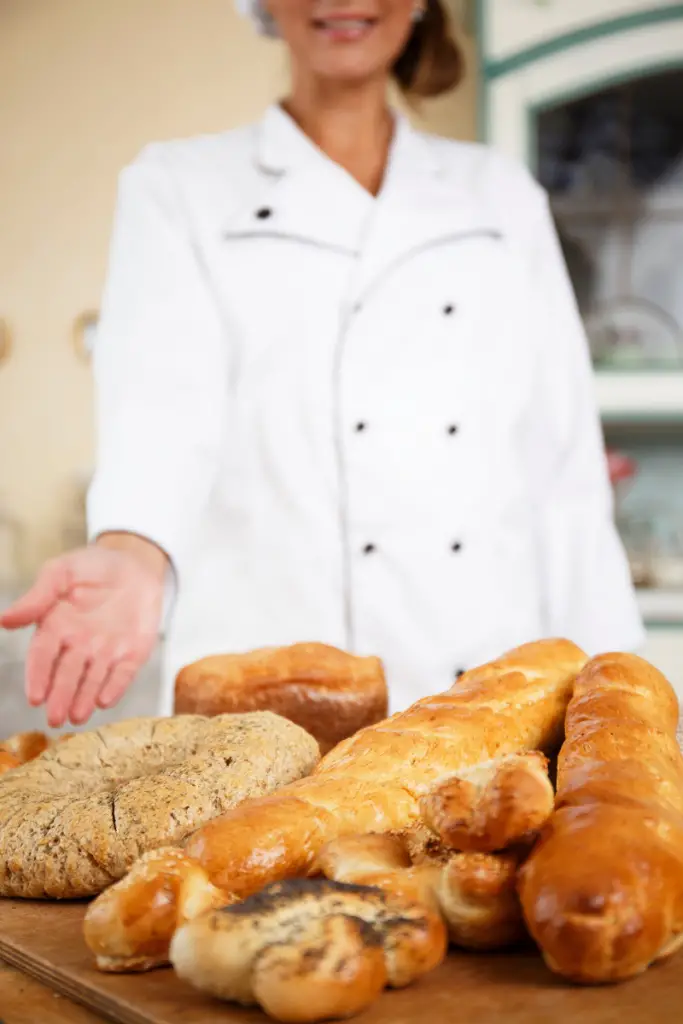
Chocolate Work to Create Artisanal Confections.
Proficiency in working with chocolate is a valuable skill for baking and pastry chefs. This includes tempering chocolate, creating moulded chocolates, crafting chocolate decorations, and understanding the different types of chocolate and their specific applications in desserts.
Chocolate work enhances the repertoire of a pastry chefs, allowing them to create exquisite desserts, elaborate decorations, and artisanal confections, adding a touch of sophistication and luxury to their offerings.
How to develop chocolate work skills as a pastry chef:
Practice Tempering: Regularly practice tempering chocolate to achieve the right texture and shine, a fundamental skill for working with chocolate in various applications.
Experiment with Techniques: Explore different chocolate techniques such as moulding, piping, and sculpting. Experimentation helps in understanding the versatility of chocolate and improves proficiency.
Learn from Mistakes: Embrace the learning process, and don’t be discouraged by mistakes. Every attempt provides an opportunity to improve and refine chocolate work skills.
Learn from Experts: Attending specialised chocolate workshops or courses and studying from reputable chocolatiers’ resources or publications.
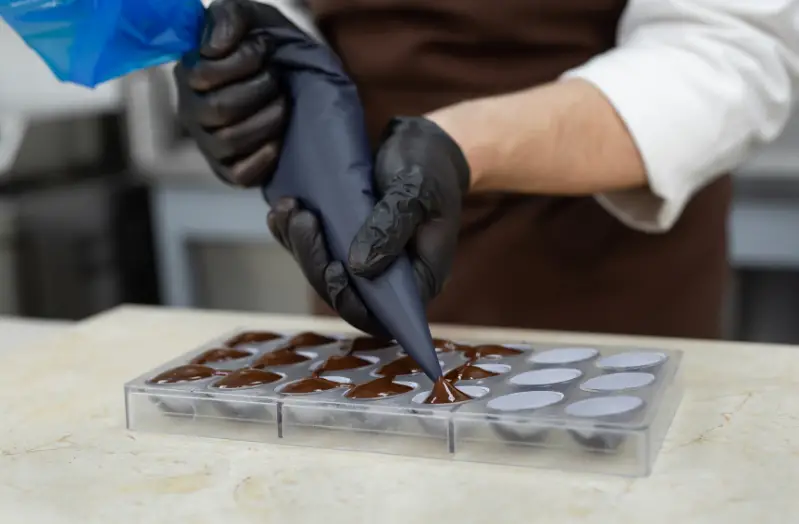
Sugar Artistry for Decorations and Displays.
Baking and pastry chefs skilled in sugar artistry can create intricate and decorative pieces using sugar as the primary medium. This includes techniques such as pulling, blowing, casting, and moulding sugar to create showpieces, sugar flowers, and delicate designs for cake decorations or display purposes.
Sugar artistry allows pastry chefs to create intricate and captivating edible decorations, elevating desserts and showpieces into impressive works of art, enhancing the overall visual appeal and presentation.
How to develop sugar artistry skills as a pastry chef:
Start with Basic Techniques: Begin with simple sugar art techniques like pulling sugar or making sugar ribbons. Mastering the basics forms a solid foundation for more complex creations.
Patience and Persistence: Sugar artistry requires patience and persistence, as it may take several attempts to achieve the desired results. Embrace the learning process; continuous practice will lead to improvement and mastery.
Learn from Others: Attend specialised sugar artistry classes or demonstrations and seek guidance from experienced sugar artists or pastry chefs. Explore online tutorials and resources demonstrating various sugar artistry techniques. Watching and practising alongside experts can enhance skills and inspire creativity.
Ice Cream and Frozen Desserts to Complement Baked Goods.
Knowledge of ice cream and frozen dessert production is essential for baking and pastry chefs. This includes understanding the science of freezing, stabilisers, churning methods, and flavour development. Skills in creating sorbets, gelato, ice creams, and other frozen treats enhance a chef’s dessert repertoire.
Mastering ice cream and frozen dessert techniques allows pastry chefs to create a delightful array of refreshing and indulgent treats, complementing their baked goods, expanding their dessert offerings and catering to diverse customer preferences.
How to develop ice cream and frozen dessert skills as a pastry chef:
Experiment with Flavour Combinations: Develop ice cream and frozen dessert skills by studying ice cream production methods and recipes. Play with various flavour combinations, mix-ins, and toppings to create unique and delicious frozen desserts. Experimentation fosters creativity and helps discover winning flavour profiles.
Focus on Texture and Consistency: Pay close attention to the texture and consistency of ice cream and frozen desserts. Achieving the perfect balance ensures a smooth and creamy mouthfeel, enhancing the overall experience.
Invest in Quality Ingredients: Use high-quality ingredients when making ice cream and frozen desserts. The choice of ingredients significantly impacts the taste and overall quality of the final product.
Learn from experts: Seek knowledge from experienced ice cream makers or pastry chefs.
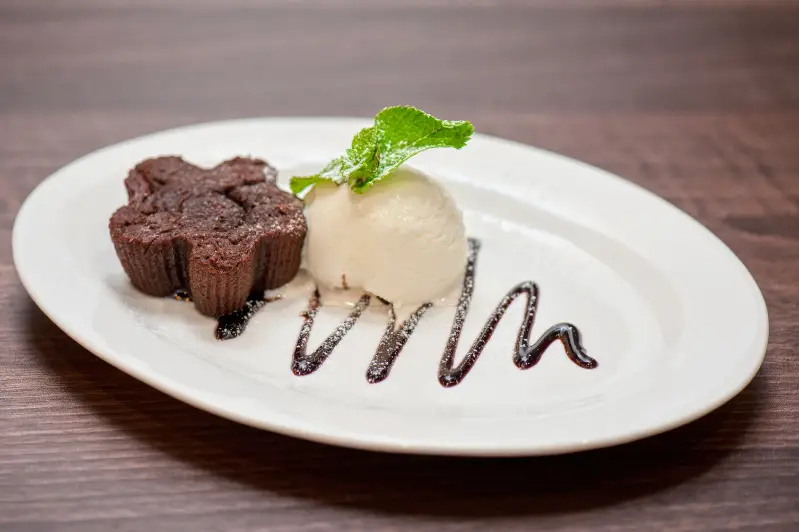
Savoury Baking for Non-Sweet Options.
In addition to sweet pastries and desserts, baking and pastry chefs may also be required to have skills in savoury baking. This includes knowledge of bread rolls, savoury tarts, quiches, and other pastry-based savoury dishes. Understanding the balance of flavours and textures in savoury baking is vital for a well-rounded culinary skill set.
Savoury baking allows pastry chefs to create diverse savoury delights, expanding their culinary repertoire and catering to customers seeking non-sweet options.
How to develop savoury baking skills as a pastry chef:
Experiment with Flavors: Study savoury baking recipes and techniques. Practise making savoury pastries like tarts and quiches, experimenting with different fillings and flavour combinations.
Perfect Dough Techniques: Focus on mastering different dough techniques used in savoury baking, such as shortcrust, puff pastry, and phyllo dough, to achieve the desired texture and structure in the final product.
Seek Feedback: Share your savoury creations with colleagues, friends, and family to receive feedback and insights on taste, texture, and presentation. Constructive feedback helps in refining and improving savoury baking skills.
Flavour Pairing and Palate Development for Balance in Taste.
Baking and pastry chefs are skilled in flavour pairing and deeply understand complementary and contrasting flavours. Mastery in flavour pairing and palate development enables pastry chefs to create harmonious combinations that balance sweetness, acidity, bitterness, and other taste profiles, enhancing the overall taste experience and captivating the senses of their customers.
Palate development is crucial for creating well-balanced and memorable desserts that excite the taste buds.
How to develop flavour pairing and palate development:
Experiment with Combinations: Regularly experiment with different flavour combinations, both traditional and unconventional, to understand how various ingredients complement and enhance each other.
Taste and Analyse: Continuously taste various desserts and dishes from different cuisines to develop a discerning palate. Analyse each dish’s flavours, textures, and nuances to refine your understanding of taste profiles.
Seek Feedback: Share your dessert creations with peers, mentors, and customers to receive feedback on taste and flavour balance. Embrace constructive criticism as it helps refine flavour pairing skills and palate development.
Enhance Learning: Attend sensory analysis workshops or courses, explore different cuisines and flavour traditions, and seek guidance from experienced chefs or flavour experts.
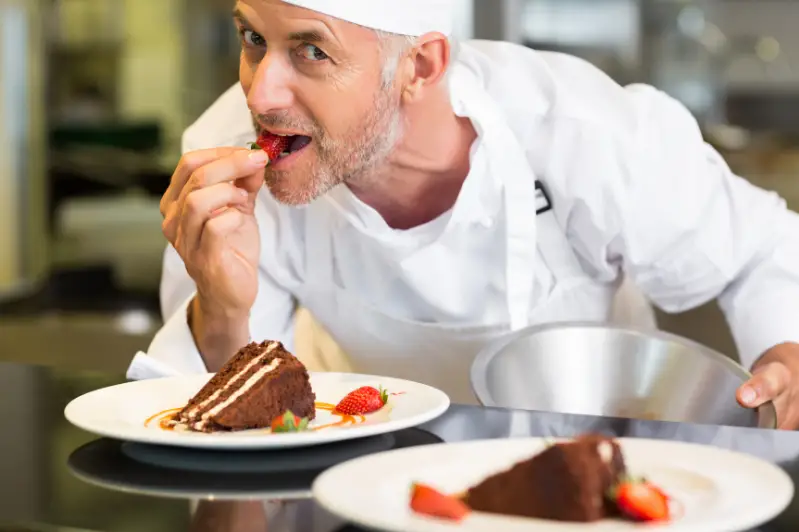
Menu and Recipe Creation for Skill Show and Client Taste.
Baking and pastry chefs need skills in menu development and recipe creation. This involves conceptualising and designing dessert menus that complement the overall culinary theme of a restaurant or bakery. Pastry chefs should be adept at recipe development, ingredient pairing, and creating innovative and unique dessert offerings.
Proficiency in menu development and recipe creation allows pastry chefs to craft unique and innovative dessert offerings that cater to customer preferences, showcase their creativity, keep abreast of trends and set their establishment apart from the competition.
How to develop menu development and recipe creation skills as a pastry chef:
Do Research: Conduct thorough market research to understand current trends and flavours, customer preferences, and gaps in the dessert offerings. Use this information to develop menus that align with customer demands.
Ingredient Exploration: Experiment with various ingredients, flavours, and textures to develop new and exciting dessert recipes. Refine recipes through trial and error. Play with combinations and techniques to create original and exceptional treats.
Tasting Panels and Feedback: Organise tasting panels with colleagues, friends, and customers to gather feedback on your menu items and recipes. Use the feedback to refine and improve your dessert creations and menu offerings.
Ingredient Knowledge to Create Tasty and Innovative Goods.
Baking and pastry chefs need a comprehensive understanding of the ingredients used in their craft. This includes knowledge of various flours, leavening agents, sugars, fats, dairy products, flavourings, and other vital ingredients.
Understanding ingredient properties, flavours, interactions of various ingredients, substitutions, and their roles in different recipes is crucial for successful pastry creation. It allows them to create well-balanced, innovative desserts with exceptional taste and texture.
How to develop ingredient knowledge as a pastry chef:
Research and Study: Invest time researching and studying different ingredients used in pastry-making. Understand their characteristics, functionalities, and how they contribute to desserts’ overall taste and texture.
Hands-on Experience: Experiment with various ingredients in different recipes. Working with the ingredients firsthand provides valuable insights into their behaviour during baking and allows for creative exploration.
Collaboration and Networking: Engage with fellow chefs, bakers, and professionals in the culinary industry. Collaborate on projects, attend workshops, and exchange knowledge to gain exposure to diverse ingredient usage and techniques.
Specialised Dietary Knowledge to Cater to Special Needs.
In today’s culinary landscape, knowledge of specialised dietary needs and restrictions is valuable for baking and pastry chefs. This includes proficiency in creating gluten-free, dairy-free, vegan, or allergen-free desserts while maintaining taste, texture, and presentation standards to cater to diverse dietary requirements.
Having specialised dietary knowledge allows pastry chefs to accommodate diverse dietary requirements and preferences, ensuring they can create delicious and inclusive desserts for customers with specific needs.
How to develop specialised dietary knowledge as a pastry chef:
Research and Study: Invest time in researching and studying various dietary restrictions and preferences and alternative ingredients and substitutes suitable for different dietary needs.
Experimentation and Adaptation: Practice adapting traditional dessert recipes to meet specialised dietary requirements. Experiment with alternative ingredients and techniques to create equally delicious and safe desserts for all customers.
Collaboration with Nutritionists and Dietitians: Work with nutritionists or dietitians to gain insights into specific dietary needs and receive guidance on creating nutritious and satisfying desserts that align with different dietary preferences. Collaborating with experts enhances specialised dietary knowledge.
Enhance Learning and Stay Trendy: Attend workshops or courses on specialised diets and stay updated with the latest dietary trends and practice advancements.
Seasonal and Local Ingredient Use for Sustainability.
Baking and pastry chefs who incorporate seasonal and locally sourced ingredients in their creations showcase a commitment to freshness, sustainability, and supporting local producers. They understand how to adapt recipes and showcase the best flavours of each season, creating desserts that highlight the region’s natural bounty.
Skill in using seasonal and local ingredients allows pastry chefs to create fresh, sustainable, and regionally inspired desserts, reflecting the season’s flavours and promoting environmental consciousness.
How to develop skills in seasonal and local ingredient utilisation:
Develop skills: Hone skills in utilising seasonal and local ingredients by studying seasonal produce calendars, experimenting with seasonal recipes and ingredient pairings, and seeking guidance from local farmers or chefs specialising in farm-to-table cuisine.
Stay Informed: Track seasonal produce and local ingredient availability in your region. Stay informed about the peak seasons of different fruits, vegetables, and other ingredients.
Build Relationships with Suppliers: Connect with local farmers, suppliers, and markets to directly source fresh and seasonal ingredients. Building relationships ensures access to the best quality produce.
Experiment and Adapt: Embrace the challenge of working with seasonal ingredients and adapt your dessert recipes accordingly. Experiment with different flavour pairings and techniques to create delectable desserts that highlight the unique attributes of each season’s offerings.
Patisserie Display and Buffet Presentation for Aesthetics.
Baking and pastry chefs are skilled in patisserie display and buffet presentation and can create visually appealing and enticing dessert displays. They understand the principles of height, colour, balance, and arrangement to create stunning presentations that enhance the overall dining experience.
Mastering patisserie display and buffet presentation elevates the visual appeal of desserts, creating a captivating and enticing display that attracts customers and enhances the overall dining experience.
How to develop patisserie display and buffet presentation skills as a pastry chef:
Attention to Detail: Focus on minor details, such as arrangement, colour coordination, and use of props, to create visually stunning patisserie displays and buffet presentations.
Market Trends and Aesthetics: Stay updated with current market trends and design aesthetics related to dessert presentation. Drawing inspiration from contemporary styles allows for creating modern and visually appealing displays.
Feedback and Self-Critique: Seek feedback from colleagues, customers, and peers on your patisserie displays and buffet presentations. Engage in self-critique to identify areas for improvement and continually refine your skills.
Enhance Learning: Enhance patisserie display and buffet presentation skills by studying principles of visual presentation, practising arrangement and styling techniques, attending courses or workshops on dessert displays, seeking inspiration from art and design, and incorporating feedback from experienced pastry chefs or event designers.
International Pastry Know-how to Enrich Skills.
Baking and pastry chefs who possess knowledge of international pastry techniques broaden their culinary repertoire.
Familiarity with French, Italian, Spanish, or other international pastry traditions enables pastry chefs to broaden their culinary horizons, draw inspiration from diverse cultures, and infuse global flavours and techniques into their creations, resulting in innovative desserts and adding depth and versatility to their skill set.
How to develop knowledge of international pastry techniques:
Explore Culinary Literature: Read books and articles on international pastry techniques, including traditional and modern approaches in different countries and cultures.
Experiment with Global Recipes: Practice baking and making desserts from worldwide cuisines. Experimenting with different recipes exposes you to new techniques and flavour profiles.
Connect with Culinary Experts: Attend international pasty workshops and engage with pastry chefs and bakers from different countries through online communities, workshops, and events. Seek guidance from chefs specialising in specific international cuisines. Networking with international culinary experts provides valuable insights into their techniques and traditions.
Culinary Maths Proficiency for Precise Results.
Mathematics is critical in baking and pastry arts, involving precise measurements, conversions, and recipe scaling to achieve the desired results.
In a professional kitchen, culinary maths is essential for accurate ingredient measurements, recipe scaling, and cost calculation, ensuring consistent and high-quality dessert production.
How to develop proficiency in culinary maths:
Regular Practice: Practice culinary maths regularly by measuring and scaling recipes during baking sessions, understanding ratios and percentages, and utilising formulas for recipe adjustments. Familiarity with conversions and measurements enhances precision in dessert preparation.
Utilise Kitchen Tools: Use kitchen tools such as digital scales, measuring cups, and conversion charts to aid in precise ingredient measurements and calculations.
Seek Feedback: Share your dessert creations with colleagues and mentors to receive feedback on ingredient measurements and conversions. Feedback helps in identifying areas for improvement and boosting culinary maths skills.
To further understand maths in baking and pastry, please read our article on this topic.
Understanding the Science of Baking for Accurate Results.
Baking and pastry science is vital for understanding the chemical reactions and principles during baking, ingredient interactions, and achieving desired textures and flavours.
Understanding the chemical reactions in baking, such as leavening, caramelisation, and Maillard reaction, empowers pastry chefs to make informed decisions during the baking process, leading to consistent and successful results in their creations.
How to develop knowledge of the chemical reaction in baking:
Study Baking Science: Read books and resources on baking science to gain insights into the chemical reactions that occur during baking, study the functions of ingredients, learn about leavening agents, temperature control, and gluten development, and understand the impact of different ingredients on the final product.
Conduct Experiments: Perform experiments in the kitchen to observe the effects of different ingredients and baking techniques on the outcome of baked goods and analyse baking failures. Hands-on experience deepens understanding.
Learn from Experts: Attending science-based baking workshops or courses and staying updated with scientific advancements. Engage with experienced bakers, chefs, or food scientists to learn from their knowledge and expertise in baking science. Asking questions and seeking advice can provide valuable insights and clarification.
Our article on why pastry chefs need an understanding of the science of baking delves more deeply into this topic. We encourage you to read it.
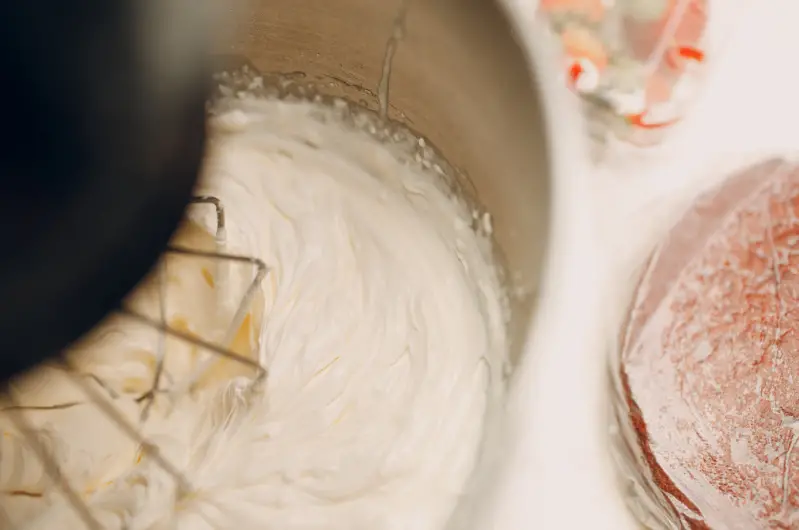
Knife Skills for Precision, Efficiency and Safety.
Baking and pastry chefs should possess proficient knife skills. This includes precision in slicing, dicing, chopping ingredients and proper knife handling techniques. Solid knife skills allow pastry chefs to efficiently and precisely prepare ingredients, such as cutting fruits, chopping nuts, or trimming pastry dough, resulting in uniform and well-prepared components for their baked goods.
Mastering knife skills enhance efficiency, safety, and the ability to achieve uniformity in ingredient preparation.
How to develop knife skills in baking as a pastry chef:
Practice Knife Techniques: Improve knife skills through practice and repetition. Practice different knife techniques, such as slicing, dicing, and mincing, to improve accuracy and speed in ingredient preparation.
Master Knife Maintenance: Learn how to properly sharpen and care for knives to maintain their sharpness and effectiveness during baking tasks.
Seek Guidance: Seek guidance from experienced chefs or colleagues on proper knife handling and cutting techniques. Observing and learning from others can provide valuable insights and tips for honing knife skills.
Oven and Equipment Expertise for Quality and Efficiency.
Proficiency in working with different types of ovens and baking equipment is essential for baking and pastry chefs. This includes understanding oven temperature control, using convection ovens, and utilising specialised equipment such as piping bags, pastry cutters, or pastry brushes. Knowledge of equipment maintenance and troubleshooting is also beneficial.
Mastering oven and equipment use ensures precise temperature control and proper utilisation of baking tools, leading to consistent and perfectly baked desserts with ideal texture and appearance.
How to develop oven and equipment expertise as a pastry chef:
Read Equipment Manuals: Familiarize yourself with the operation and specifications of ovens and other baking equipment. Understanding their features and functions is essential for optimal usage.
Temperature Testing: Conduct temperature tests on ovens to verify their accuracy and learn about hot spots. This knowledge helps in adjusting baking times and ensuring even baking results.
Experiment with Different Settings: Practice baking various recipes using different oven settings to understand how each affects the baking process. Experimentation allows you to fine-tune your oven expertise.
Get trained: Attend equipment-specific training sessions or demonstrations and seek guidance from equipment suppliers or experienced chefs to use equipment optimally.
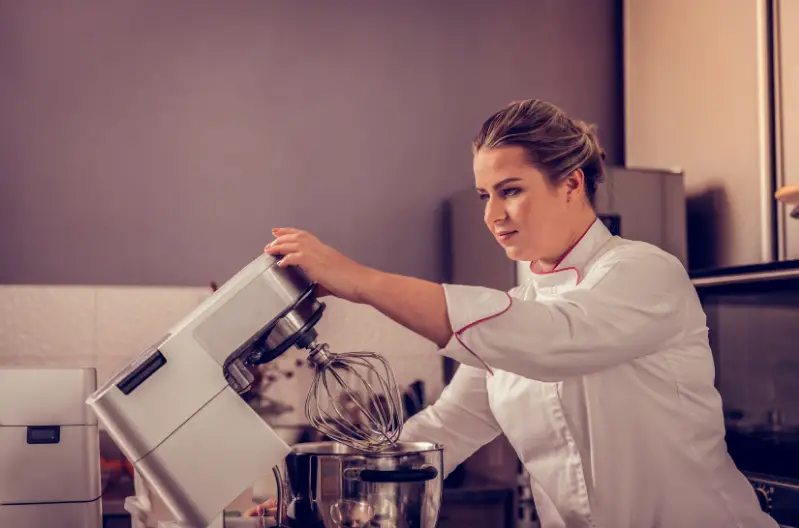
Hygiene and Food Safety Know-how for Customer Safety.
Hygiene and food safety practices are paramount for pastry chefs to ensure the well-being and trust of customers. These skills encompass the knowledge and implementation of rigorous hygiene standards and safety measures in pastry production.
Hygiene and food safety practices involve maintaining cleanliness, proper sanitation, and safe handling of ingredients and equipment throughout pastry-making to prevent foodborne illnesses and contamination.
How to Develop Hygiene and Food Safety Practices:
Acquire knowledge: Get to know food safety and hygiene practices through formal food safety training programs, stay updated with industry standards, and regularly refresh your knowledge through continuing education.
Strictly follow food safety and hygiene practices: These should cover proper handwashing, cleaning and sanitation procedures, ensuring that the working environment and equipment meet industry standards for cleanliness and safety and following food storage and temperature control protocols.
Conduct Regular Self-Audits: Conduct self-audits to assess hygiene and safety standards adherence. Identify areas that need improvement and take proactive measures to address any issues.
Continuous Education: Stay updated on food safety guidelines and regulations. Attend workshops and seminars, and read reputable resources to enhance your knowledge and stay informed about the latest practices and protocols in food safety.

Menu Costing and Profitability Analysis for Decision Making.
Baking and pastry chefs with solid financial acumen can effectively manage menu costing and analyse profitability. They possess skills in determining ingredient costs, portion sizes, recipe scaling, and calculating menu item costs.
Proficiency in menu costing and profitability analysis helps pastry chefs balance creativity and business acumen. It allows them to price their creations appropriately and manage ingredient costs efficiently, ensuring financial viability and maximising profitably while maintaining the quality and creativity of their dessert offering.
How to develop skills in menu costing and analysing profitability.
Study financial management: Improve menu costing and profitability analysis skills by studying financial management principles, practising recipe costing and portion control, analysing menu item profitability, attending culinary business or financial management courses, and seeking guidance from experienced chefs or restaurant consultants.
Keep Detailed Records: Maintain comprehensive records of ingredient costs, portion sizes, and sales data for each dessert item. Analysing this information helps in understanding the profitability of individual menu items.
Regular Cost Analysis: Conduct routine cost analysis to identify areas where cost-saving measures can be implemented without compromising the quality of the desserts.
Monitor Customer Feedback: Pay attention to customer feedback on pricing, portion sizes, and overall satisfaction. Utilise this feedback to make necessary adjustments and improvements to optimise profitability.
Quality Control and Consistency to Maintain Standards.
Baking and pastry chefs must demonstrate a keen eye for quality control and the ability to maintain consistency in their desserts, baked goods and pastries. This includes ensuring that every batch of baked goods meets the desired taste, texture, appearance, and quality standards. Attention to detail and the ability to troubleshoot and adjust recipes contribute to maintaining consistent output.
Maintaining strict quality control and consistency ensures that every product meets the highest standards, delivering a delightful and reliable experience for customers and upholding the reputation of the pastry chef and establishment.
How to develop quality control and consistency skills as a pastry chef:
Standardise Recipes: Create standardised recipes with precise measurements and detailed instructions. Follow these recipes consistently to produce uniform and high-quality desserts.
Regular Taste Testing: Conduct standard taste tests to evaluate the desserts’ flavour, texture, and presentation. This helps identify any variations or improvement areas in the final product.
Feedback and Iteration: Gather feedback from customers and colleagues and use it to refine and improve the desserts continually. Regularly iterating on recipes and processes enhances quality control and consistency over time.


